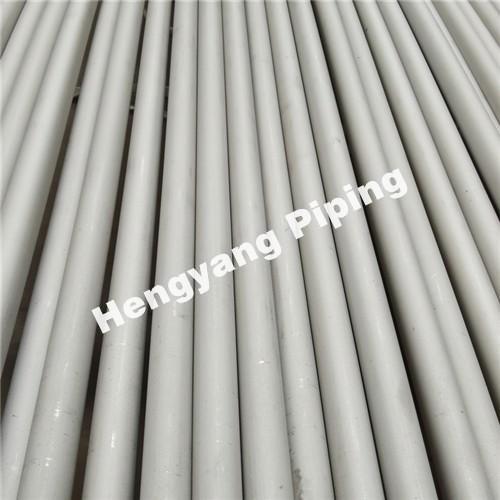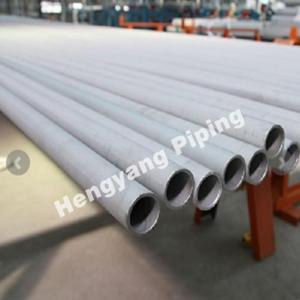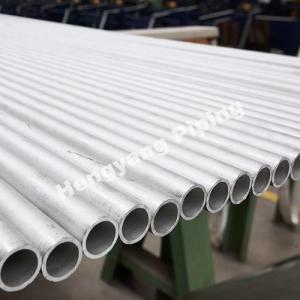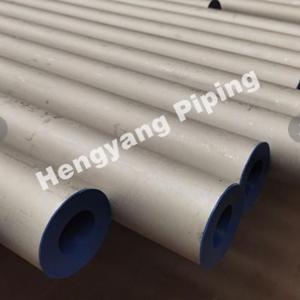Difference Between Duplex Steel UNS S32205 and S31803
UNS S31803 and S32205 represent alloys that share more similarities than differences. To begin with, they are both stainless steel alloys featuring identical elemental components. Both S31803 and S32205 belong to the duplex 2205 family, indicating a composition of roughly equal proportions of austenite and ferrite. Additionally, both alloys exhibit exceptional strength and durability, making them suitable for deployment in some of the most demanding and rigorous production processes. These applications require materials capable of withstanding repeated and continuous exposure to challenging conditions.
Everything you need to know about UNS S32205 and S31803 and their applications
UNS S32205 is a dual-phase stainless steel alloy that combines ferritic and austenitic properties. Alloyed with 22% chromium, 3% molybdenum, and 5 to 6% nickel, it stands out as the most extensively utilized grade of duplex stainless steel. Notably, it exhibits a high yield strength, twice that of standard austenitic stainless steel grades. Renowned for its exceptional resistance to pitting and crevice corrosion, UNS S32205 performs excellently in a wide range of caustic environments. Additionally, it boasts good weldability, further enhancing its versatility in various applications.
Its Applications:
pulp mills
food processing
chemical processing, and more.
UNS S31803 is a duplex-grade alloy characterized by a ferritic-austenitic microstructure. In the annealed condition, it comprises approximately 40–50% ferrite. This duplex microstructure endows the alloy with the robust strength typical of ferritic grades, all while retaining the corrosion resistance associated with austenitic grades.
Its Application:
Fuel gas filters
Chemical tanks
Heat exchangers
Acetic acid distillation elements
Difference Between UNS S32205 and S31803
The original specification for duplex stainless steel was established as UNS S31803. However, various manufacturers continually refined and elevated this grade to the maximum permissible specification, enhancing its corrosion performance. This advancement also led to the activation of nitrogen additions, making it more than just a passive element in the background. The top-performing duplex grade saw increased levels of chromium, molybdenum, and nitrogen. UNS S32205 was introduced to distinguish the duplex stainless steel produced at the upper end of the composition range. The key differentiations include:
UNS S32205 contains higher nitrogen content which gives it extra strength. Hence, it is super safe. It provides an additional protective cover against any corrosive compounds. UNS S32205’s heightened corrosion resistance gives it a significant distinction from UNS S31803. UNS S32205 was a highly dependable piece of duplex steel, but now it has an enriched propensity to protect against wear and tear and preserve the quality of any application.
UNS S31803 and S32205 are alloying with more similarities than differences. For starters, they are both stainless steel with similar elemental compositions. UNS S31803 and S32205 are both members of the duplex 2205 family, which means they are nearly equal parts austenite and ferrite. The minimum requirements for chromium, molybdenum, and nitrogen are slightly higher in S32205, but it still falls within the S31803 chemical composition range.
To address potential concerns related to the loss of corrosion resistance and toughness in the heat-affected zone (HAZ) of certain S31803 welds, the S32205 grade was developed.
As a recommended solution, users are advised to specify the S32205 grade. If the use of S31803 is necessary, which may arise due to its inclusion in the ASME standard, it is crucial for users to demand that the chemical composition of all S31803 grades meets the requirements outlined for S32205 grades. This ensures consistent performance. Both Duplex Steel S31803 Bar and Duplex Steel S32205 Bar exhibit high strength, exceptional impact toughness, and stress corrosion resistance.
Outperforming 316L or 317L austenitic stainless steel in almost all corrosive media concerning pitting and crevice corrosion resistance, S32205 also boasts higher thermal conductivity and lower thermal expansion than its austenitic counterparts. It additionally possesses notable corrosion and erosion fatigue properties. The alloy maintains high thermal strength within the 950–1150°C range, comparable to type 430. However, below 900°C, a significant increase in strength is observed. Cold workability should be approached cautiously due to the alloy's high proof stress and low elongation compared to type 304.
Why is Duplex 2205 a Superior Steel Solution?
Duplex stainless steels dominate the consumption landscape, constituting over 80% of duplex, super duplex, and hyper duplex grades. Renowned for their unparalleled anti-corrosion capacity and exceptional heat and energy absorption capabilities, they stand out in applications where materials with fewer attributes would succumb to pressure. In particular, S32205 is integral in tasks such as chemical treatment, material handling and processing projects, and paper production.
The duplex grade family, including S32205, boasts twice the strength and a substantial enhancement in corrosion resistance. The resistance to pitting corrosion can be further improved by increasing the chromium content. The development of the difference between S31803 and S32205 can be traced back to the Pitting Resistance Equivalent Number (PREN), which assesses an alloy's pitting resistance by considering various elements in its formula.







